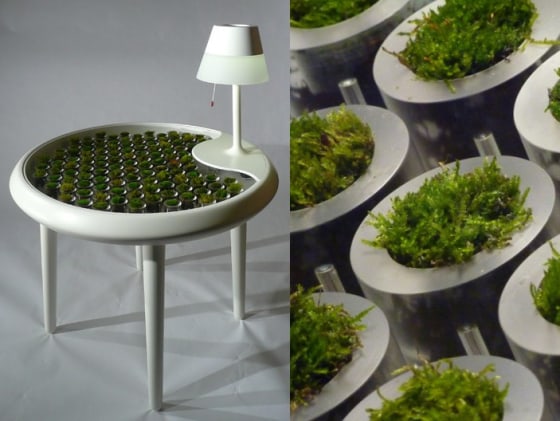Will your home's electricity be provided in the future by a rich layer of moss on the roof? Probably not, but this "Moss Table" shows that pulling a charge from photosynthesizing plants is at least a possibility.
The table was designed by Alex Driver and Carlos Peralta in collaboration with Cambridge University's Paolo Bombelli. The way it produces energy, a process they call "biophotovoltaic," is actually quite simple.
On the top of the table is a number of moss-filled pots. These grow and photosynthesize as moss normally does, and like other plants release the unused byproducts into the soil below. There, the creators have placed a certain kind of bacteria that thrives on those byproducts. As they break down the compounds, they release electrons, creating a charge. Wires running underneath the pots soak up the charge and transmit it to a central battery.

The creators say that they have one such table that has been operating for three months "quite happily," though naturally it must be watered and unhealthy pots removed.
Unfortunately, the moss isn't particularly electrifying. It yields about 50 milliwatts per square meter, producing about 520 joules of energy per day -- barely enough to power a laptop for a few seconds. But devices with serious power draw aren't the target for this kind of energy production; a digital clock or some kind of passive atmospheric sensor, on the other hand, might stay alive indefinitely.
The Moss Table isn't going to be released as a product, but it is a real thing, on show in Milan this week at a design convention. It's no replacement for wind, nuclear, or solar power, but it does show that power is there to be collected in places you might not think to look.
Devin Coldewey is a contributing writer for msnbc.com. His personal website is coldewey.cc.
